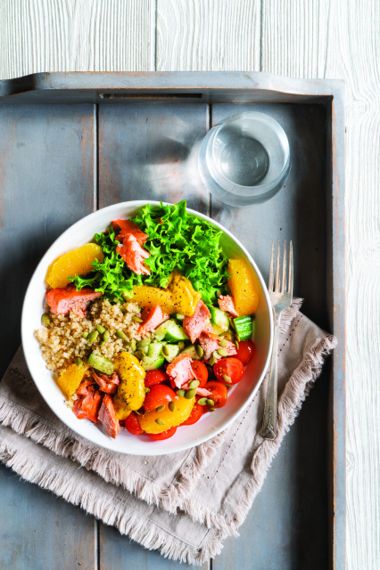Born to be Bitter
As a flavour, bitter often gets a bad rap. A taste to grimace at instead of embrace. Evolutionarily, this is understandable: as a natural defence system, our taste buds adapted to detect a modicum of bitterness since many poisons are, well, bitter.
But while most people historically have been ardent avoiders of bitterness —more simplistic sweet and salty have largely edged bitter out of the kitchen—foods such as arugula, frisée, rapini, and their respective bitter edges are increasingly colonizing restaurant menus and the vegetable aisles of supermarkets.
The booming craft beer industry is relying heavily on the bitterness of hops. Artisanal chocolate makers are offering up their wares with higher and higher cacao percentages.
Why the surging interest? Long overdue, people are waking up to the fact that bitterness adds complexity to dishes and can balance out other tastes in the flavour spectrum. Without bitterness, cooking can lack harmony and dimension.
Beyond elevating a meal to elegant, we should also consider bitterness the taste of health, as bitter foods are often rich in compounds that have a positive impact on our health. So, when it comes to bitter, it’s time to push the prejudice off your palate with these recipes that open up all the possibilities of the flavour spectrum.
Better bitters
A bitter pill might be hard to swallow, but these bitter delights can wake up your taste buds and help to up the health ante of any meal.
- arugula
- beer (IPA, stout)
- bitter melon
- black tea
- broccoli rabe (rapini, Chinese broccoli)
- Brussels sprouts
- cacao (powder, cacao nibs, and dark chocolate bars)
- chicory
- citrus peel
- coffee (dark roast)
- dandelion greens
- eggplant
- endive
- escarole
- fenugreek
- frisée
- hazelnuts (mainly skin)
- horseradish
- kale
- radicchio
- radish greens
- rutabaga
- Seville orange
- tahini
- tonic water
- turmeric
- turnip (bulb and greens)
- walnuts
- watercress
- white asparagus
- white grapefruit
Bitter foods—sweet benefits
In many cases, the nutritional benefits of bitter foods put others to shame. That’s because the compounds that make foods come off as bitter to our taste buds—think polyphenols in cacao, curcumin in turmeric, tannins in walnuts, terpenes in citrus peel, and glucosinolates in Brussels sprouts and kale—also happen to be powerfully good-for-you antioxidants that may help lower the risk for certain deadly diseases such as cancer.
Not to mention that medicinal bitter delights such as radicchio and walnuts contain an arsenal of micronutrients necessary for lasting health.
And developing a bigger appetite for bitter-tasting foods could help in the battle of the bulge. A study published in the journal Appetite found that individuals who frowned upon bitter-tasting fare were more likely to be overweight.
This makes sense if people replace bitter foods on their plate with sugary or salty processed foods and need to tame the bitterness of items such as coffee and chocolate with higher amounts of sugar. Plus, many bitter foods also tend to be low in caloric density.
Small tastes
Dumping a bunch of bitter greens on your kid’s plate is very likely to not go over well. Children naturally have an aversion to bitter-tasting foods (think of your failed attempts to get them to eat Brussels sprouts), so a better approach is needed to ease them into the world of bitter.
This means being stealthy and sneaking smaller amounts of bitter foods into dishes they already like. That could involve stirring a handful of arugula into mac and cheese or a spoonful of cacao powder into oatmeal.
Repeat exposure is a key way for all generations of a household to learn to enjoy the bitter side of foods.

Toss the tempered bitterness of raw turnip with sweet-tart apple slices, crunchy sunflower seeds, fresh mint, and a dairy-free creamy curry dressing, and you’ll have a slaw to take notice of. After all, bitter plays well with sour, salty, and especially sweet. Leftovers won’t disappoint. Deliver even higher nutrition by serving the slaw atop a bed of baby kale or spinach.

Within each bowl is a delightful play of flavours and textures with curly endive (sometimes labelled chicory) and the tahini-turmeric sauce delivering just the right amount of bitter punch. All the elements of this dish can be prepared ahead of time for a quick toss for lunch or dinner, but keep everything separated until just before serving.

Elevate your salad and side-dish game at once. When blasted in the oven and flecked with a bit of char, radicchio mellows and gains some sweetness while still retaining just the right amount of bitterness. Here, it’s paired with acidic (syrupy balsamic) and fatty (creamy cheese) ingredients to make a knife-and-fork salad with balanced flavours.

Together, arugula pesto and hazelnuts add a whisper of bitterness to this dish that offers a fresh take on pasta night to welcome spring. Tossing chickpeas into the mix adds some satiating plant-based protein. If orecchiette pasta is not available, other shaped noodles such as penne work as stand-ins.

Time to use a hit of bitter to wake up your breakfast routine. This coffee-chocolate sauce adds a haunting bitter element to everything it touches from creamy yogurt to pancakes to a bowl of vanilla ice cream. As with wine and vinegar, reducing coffee concentrates its flavour so a little goes a long way.






